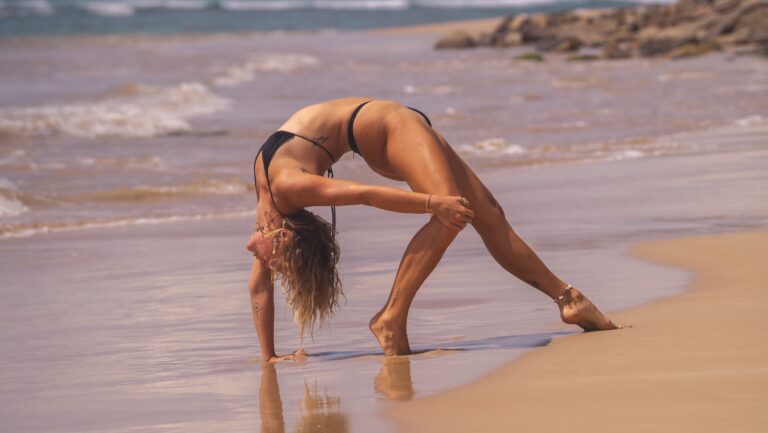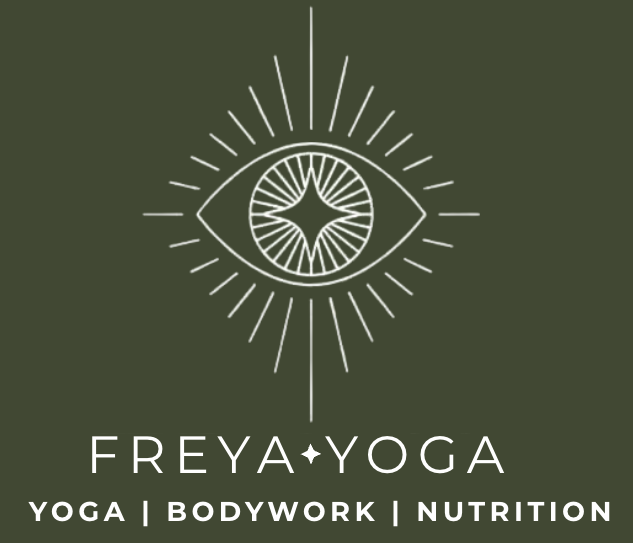What Backbends Are Really About & Why Flexibility Is Not The Most Important Part
Backbends often look bold and beautiful. But ask anyone who’s practised yoga for long enough, and they’ll tell you: backbends aren’t just about flexibility -> they’re about trust.
For me, backbends have always been a mirror.
They’ve shown me how I relate to discomfort.
How I breathe under pressure.
How I soften and release tension when I want to grip.
In my experience (both personal and as a teacher), they stir more than just spinal sensation – they stir emotion, memory, vulnerability, and resilience.
They invite us to open – without force. And that’s not just physical… it’s deeply nervous-system based.
Let’s break it down:
1. Backbends and the Nervous System
Backbending places the body in a vulnerable, open shape. You’re exposing your chest, belly, and throat – areas we unconsciously protect when we feel unsafe.
This is why so many students feel resistance in heart-openers.
Not because the shape is wrong – but because the body is wise. In a world where we’re constantly forward-facing – hunching over laptops, phones, or the weight of life – opening up physically can feel threatening emotionally.
Backbends can trigger the sympathetic nervous system (fight-or-flight) if we force them. But done with breath, support, and gradual progression, they can also help regulate the nervous system and build capacity for openness.
This is part of why I love integrating yin, breathwork & somatics alongside stronger shapes – to give the body permission to feel safe again.
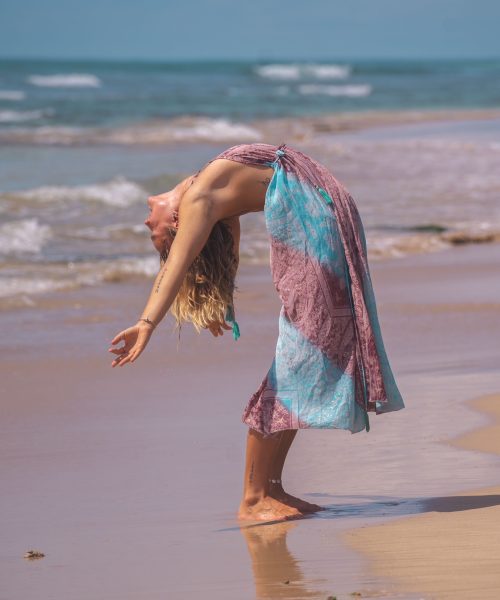
2. Backbends Need More Than Flexibility - They Need Strength
Going “deeper” isn’t always better.
And in fact – it can sometimes do more harm than good.
Backbends require so much more than just bendy muscles…
They ask for:
Spinal segmentation (articulating one vertebra at a time)
Shoulder mobility and strength
Glute and hamstring engagement
Core integration (especially your transverse abdominis + obliques)
Hip extension with psoas lengthening
If any one of these areas isn’t working well, the body often compensates by dumping pressure into the lower back – which leads to compression, pain, or frustration.
Here’s what I often teach before deep backbends:
Breath-led psoas release (to soften the front body without force)
Core connection drills (not crunches – think gentle hollow body holds or low boat variations)
Shoulder extension work (like prone cactus arms or active sphinx)
Spinal mobility waves to build control, not just range
Pelvic tilts and isolation to find neutral
When the whole system is working together, backbends feel like a conversation between body parts – not a tug-of-war between ego and spine
3. Breath is the gateway
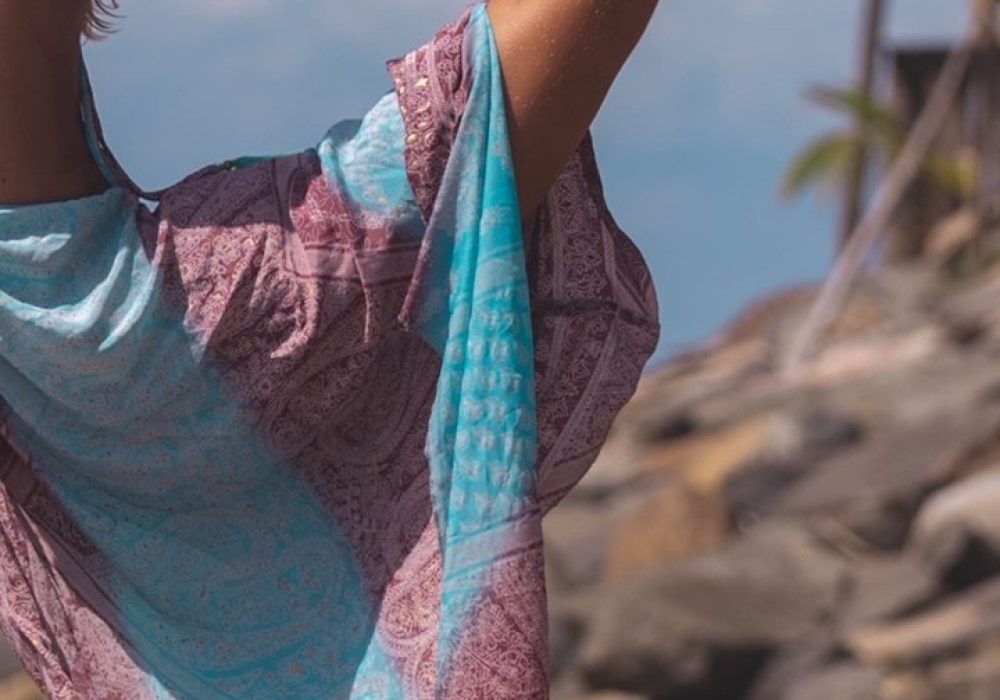
The biggest shift I’ve seen in students’ backbending practice isn’t physical. It’s the moment they stop holding their breath. That breath-holding reflex is often a sign the nervous system is bracing – that somewhere, the body doesn’t feel safe. But when you let your breath guide the shape, everything softens. You create space instead of forcing stretch.
Try this breath-based approach next time you backbend:
~Inhale: Visualise the spine lengthening, like light running through it.
~Exhale: Soften your jaw, your glutes, your ribs
~Let the breath decide how far you go – not your expectations
When you stay with the breath, you stop chasing shapes. You start building relationship. You feel the pose – instead of just holding it!
4. Where I Start in Class - From Supported Bridge to Drop-Backs
In my classes and retreats, I never begin with “big” backbends.
We work with the nervous system, not against it. That starts with building trust, awareness, and curiosity before intensity.
Here’s how I tend to sequence backbend prep:
1. Supported bridge
Lying down, block under the sacrum. This introduces spinal extension in a gentle, passive way.
It teaches the body: we’re safe, supported, and not forcing.
It’s also where I introduce back-body breath and psoas awareness.
2. Breathwork + psoas release
Breathing into the ribs, visualising space behind the heart, and holding gentle psoas releases (e.g. reclined supported lunge or sacral release) prepares the front line of the body to soften, not resist.
3. Core and glute engagement drills
This creates the container for safe movement. I’ll often use dead bugs, bridge variations, or resisted leg lifts to activate the muscles we need for spinal integrity.
4. Spinal segmentation drills
Whether seated, kneeling, or in cat-cow, I help students build awareness of moving one vertebra at a time.
This improves control and reduces that common “crunch” feeling in the lower back.
5. Progress to deeper shapes
Only when the body feels primed and supported do we explore active backbends — from dynamic lunges and low cobras, to dancers, wheels, and eventually drop-backs. But only if it feels appropriate and empowered — not pressured.
Why fear shows up - and how to work with it
Fear in backbends isn’t weakness — it’s a message.
Your body remembers what it means to be exposed. And whether that comes from physical injury, emotional vulnerability, or simply never having done the movement before — your nervous system responds accordingly.
Instead of pushing through that fear, we build capacity:
Using breath to stay present
Using props to feel supported
Using repetition to build familiarity and safety
Over time, the body stops bracing. It starts trusting.
That’s where the magic happens.
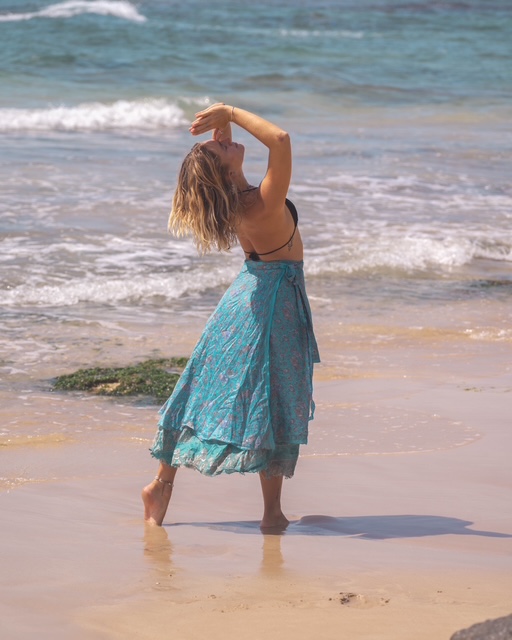
Final Thoughts
Backbends can be beautiful and bold – but that’s not what makes them powerful.
Their real magic lies in how they invite us to stay open, even when it feels hard.
They teach us to regulate, not override.
To trust, not force.
To breathe, not brace.
So the next time you come into bridge, bow, or camel – don’t ask yourself how deep you can go.
Ask yourself:
Can I stay present here? Can I soften while opening? Can I meet myself with honesty, breath, and care?
That’s the backbend I’m most interested in!
I teach this in detail through:
- 1:1 mentorship (online or in person)
- Retreats, where we explore backbends, spinal health, and nervous system regulation
- Asana clinics that break down biomechanics and breath together
You don’t need to push your body to access your heart.
You just need the right support to meet it, honestly.
With breath, strength, and softness,
Freya
